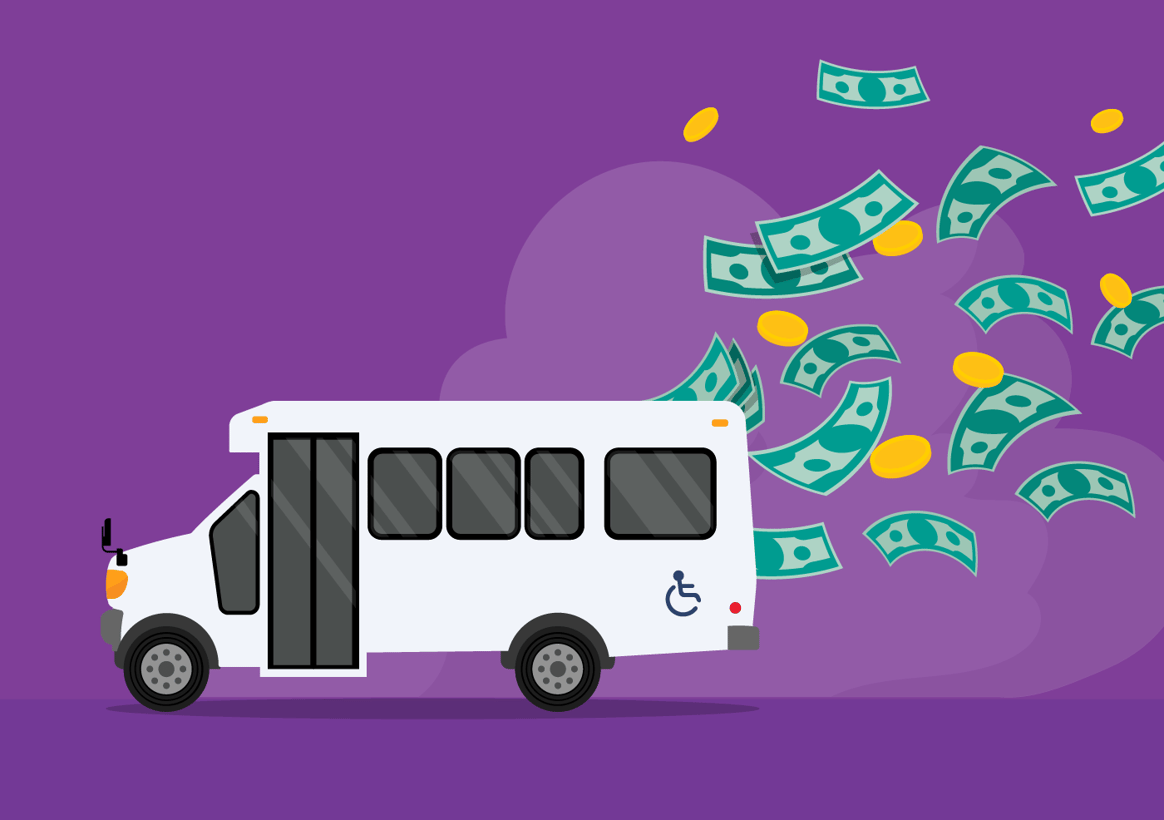Need a primer on some of the terms used below? Check out our new glossary for all of the TransitTech definitions you could ever need — and then some.
Running to the store, going to a doctor’s appointment, getting to work, attending social events — activities that are all critically important to our wellbeing and happiness as humans. Yet, for millions of people around the world who are older or have physical disabilities, simply moving around their communities is fraught with obstacles.
Moreover, because the costs of providing even the most basic paratransit services continue to climb, many public agencies are unable to focus on service improvements that could enhance the rider experience and quality of life for the paratransit rider community. Public agencies have historically struggled to provide paratransit services at a sustainable cost: The average cost for transit operators in the United States to provide a fixed route bus trip is $5, compared to $60 – $90 per trip for many paratransit services. Plus, data from the National Transit Database (NTD) shows that expenses have continued to balloon. Between 2015 and 2018, the average cost per paratransit trip increased by almost 20%, meaning cities that already spend tens of millions — and in some cases hundreds of millions — each year on paratransit must come up with even more funding just to serve the same number of passengers. 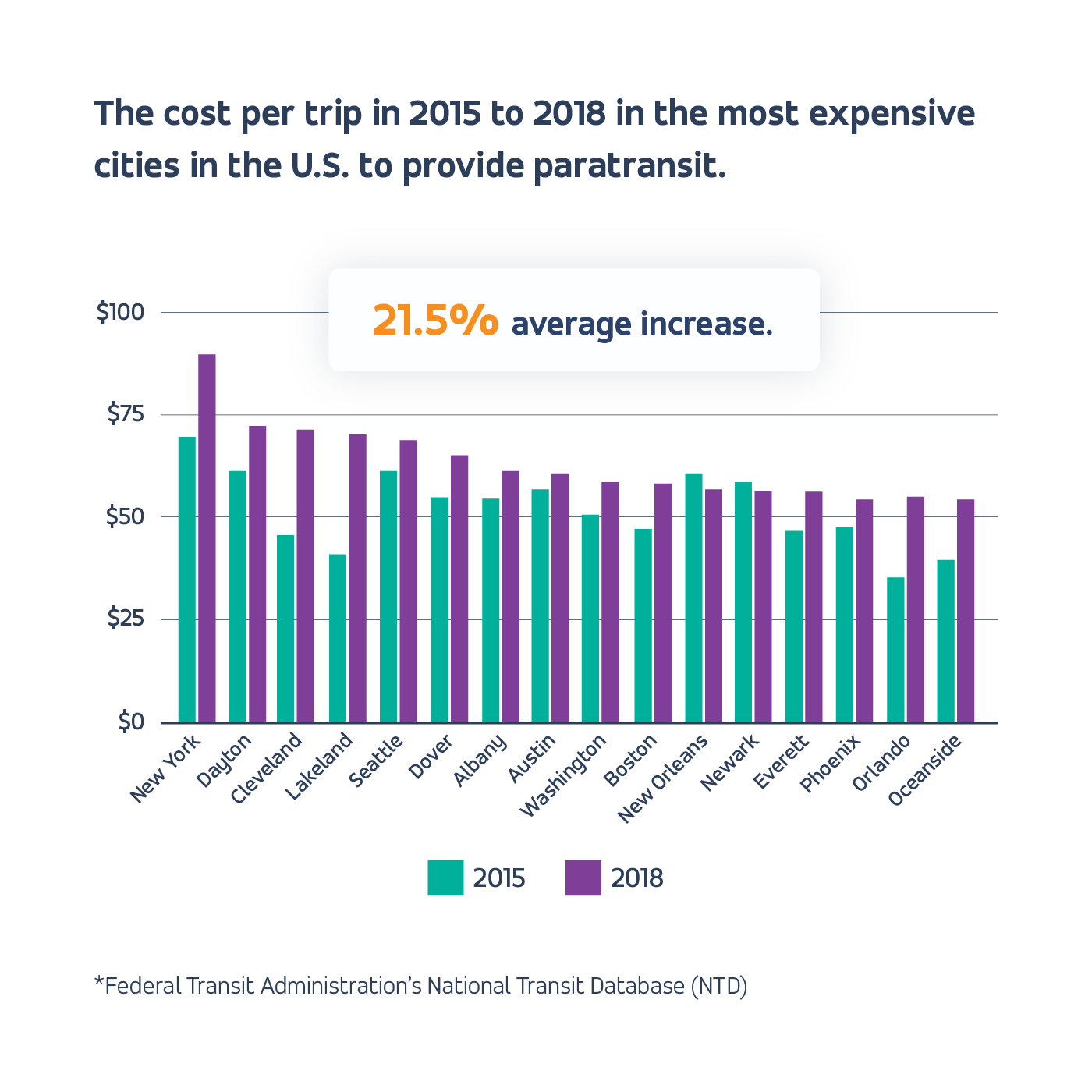 Costs are skyrocketing with no signs of improvement. But why? It all boils down to one metric: Utilization. The NTD reports that paratransit operators transported an average of just 1.8 passengers per vehicle revenue hour in 2018 (down from 2.0 in 2015), often in large cutaway buses that have 10-12 empty seats. For comparison, fixed route buses transported an average of 27.9 passengers per vehicle revenue hour.
Costs are skyrocketing with no signs of improvement. But why? It all boils down to one metric: Utilization. The NTD reports that paratransit operators transported an average of just 1.8 passengers per vehicle revenue hour in 2018 (down from 2.0 in 2015), often in large cutaway buses that have 10-12 empty seats. For comparison, fixed route buses transported an average of 27.9 passengers per vehicle revenue hour. 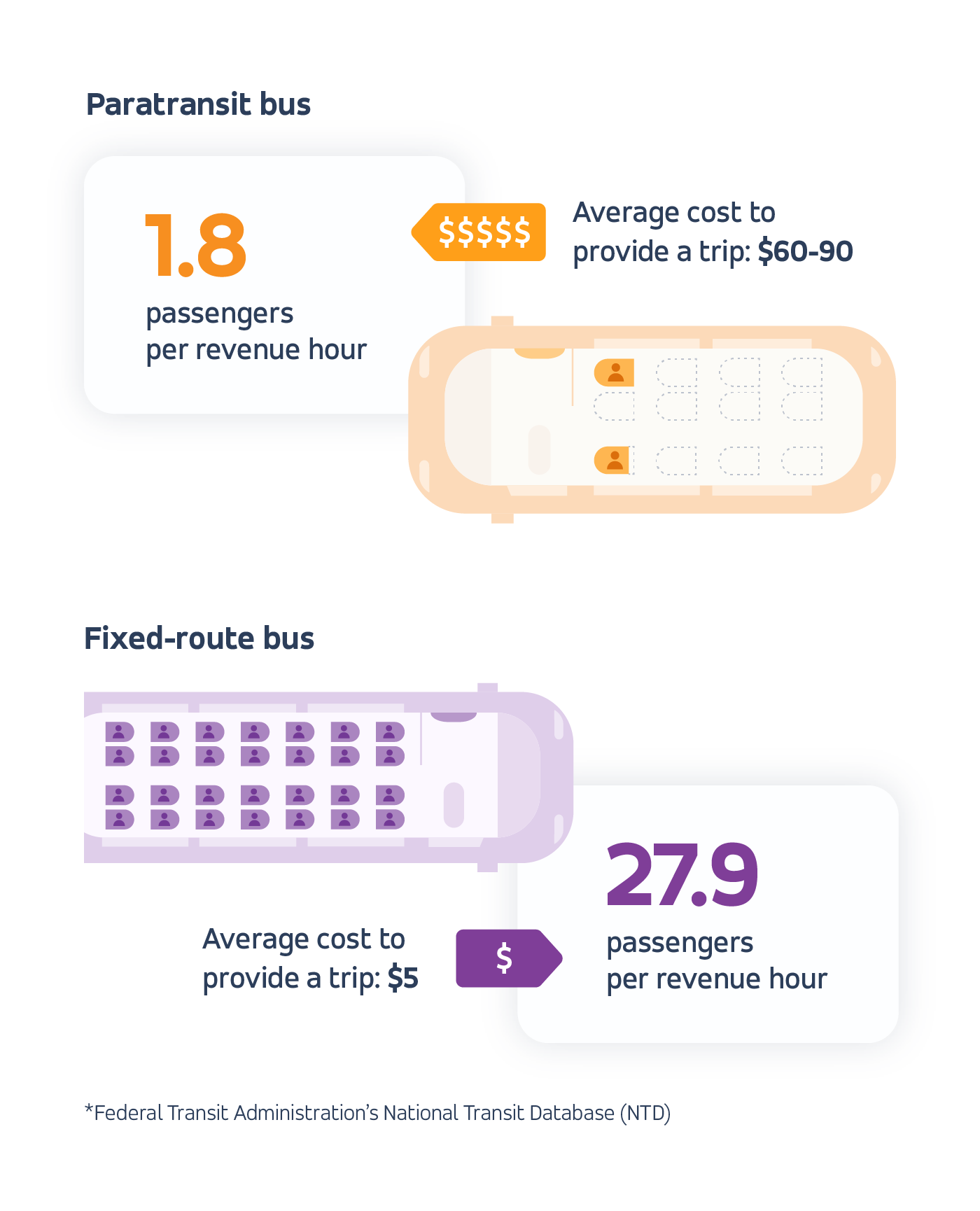 A vast majority of cities and public agencies contract with private paratransit operators, with some of the most expensive legacy companies transporting as few as one passenger per vehicle revenue hour following astonishingly manual booking and management processes. This means that for each individual trip, cities must pay an operator an hour’s worth of driver labor and fuel, not to mention dispatch labor costs, vehicle maintenance, and overhead. For cities that serve hundreds of thousands of trips per year… well, you can do the math.
A vast majority of cities and public agencies contract with private paratransit operators, with some of the most expensive legacy companies transporting as few as one passenger per vehicle revenue hour following astonishingly manual booking and management processes. This means that for each individual trip, cities must pay an operator an hour’s worth of driver labor and fuel, not to mention dispatch labor costs, vehicle maintenance, and overhead. For cities that serve hundreds of thousands of trips per year… well, you can do the math.
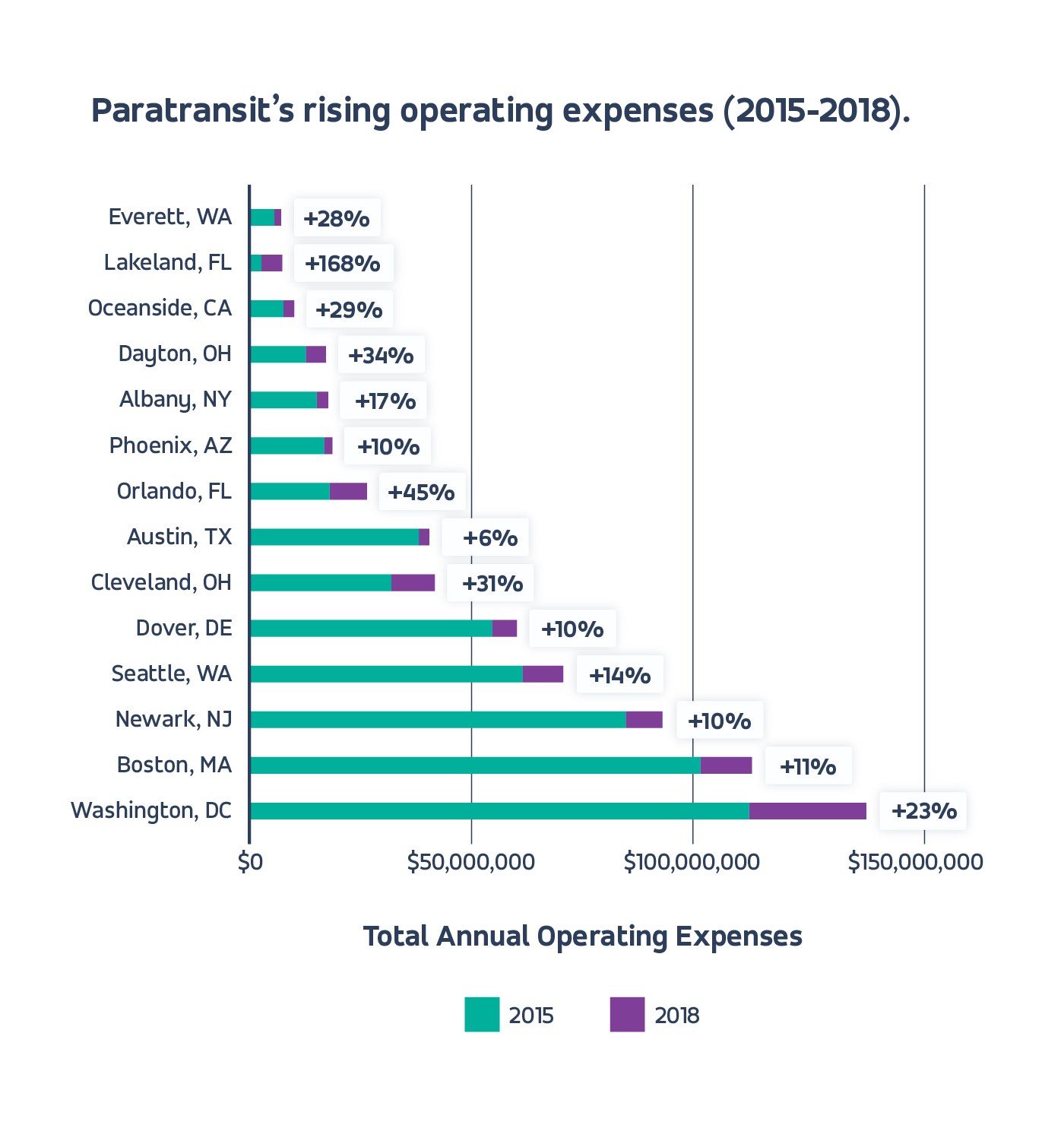
Paratransit doesn’t have to be like this.
It’s not as though an alternative solution doesn’t exist. A technology-based approach can alleviate multiple pain points by rapidly computing all service components, such as trip origin, destination, timing requested, and vehicle type — automatically generating optimal routes. Plus, by leveraging automated shift management technologies and user-friendly mobile applications for drivers, operators could reduce vehicle revenue hours, improve driver training, and streamline dispatch communication. With dynamic routing technology, the system would automatically update routes and communicate the new trip manifest to drivers via mobile application. Gone are the days of shuffling ride mishaps and reroutes over the phone with drivers.
As for the manual booking, dispatching, and payments, a few simple tech solutions can solve it all. An automated dispatch and payment system means operators can substantially reduce labor costs while boosting quality of service. But if it’s so easy and cost effective, why aren’t cities making changes?
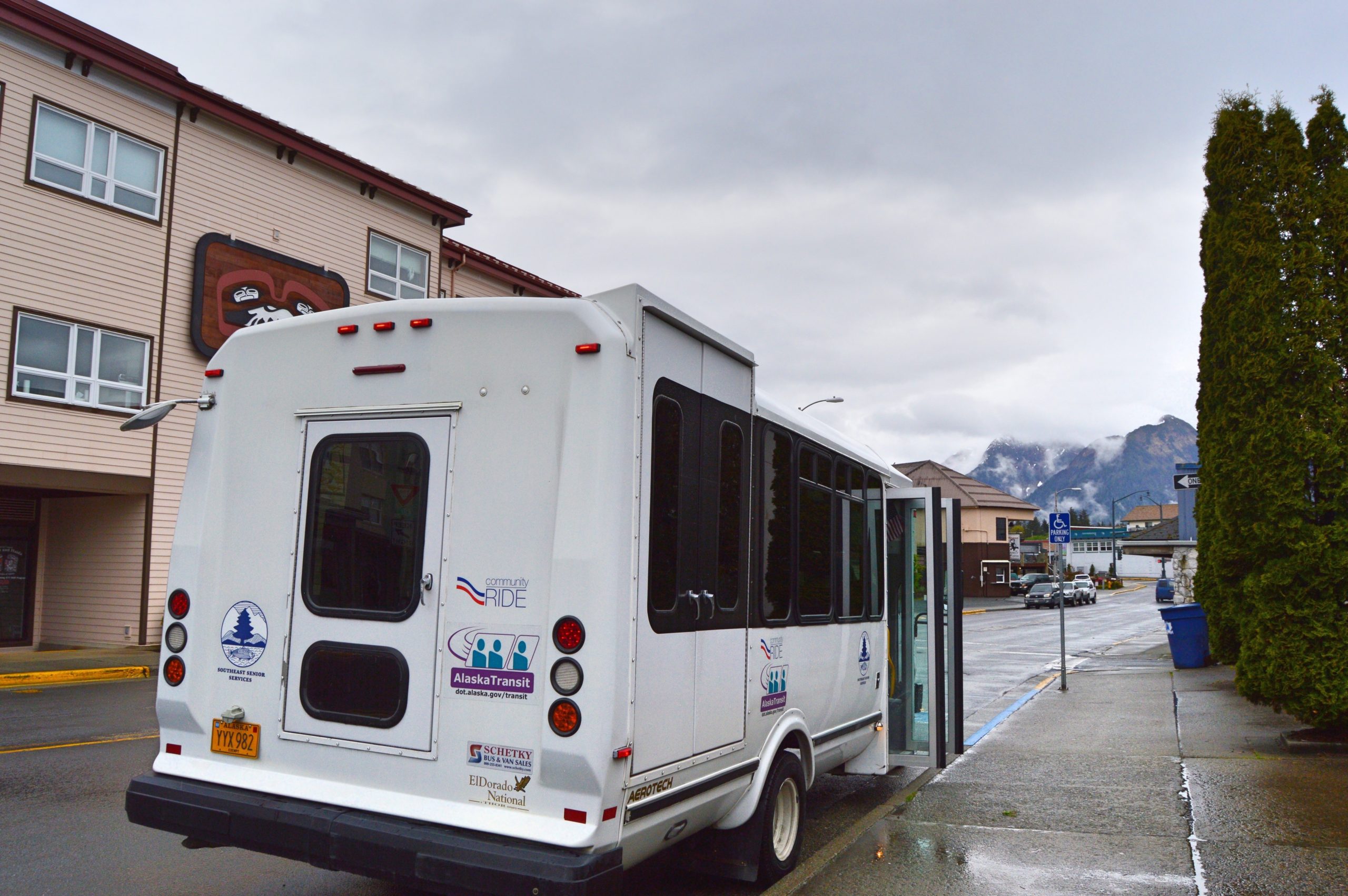
Long and misaligned contracts are a recipe for failure.
Many paratransit operators hold 8 to 10 year contracts, which freezes any competition until the next procurement process. After a bid price is locked into a long-term contract, there is no competitive market to encourage operators to offer a more attractive price for cities. In fact, operators are sometimes able to renegotiate their contracts for even higher fees while insulated from competitors.
Operators have the strongest incentive to cut costs internally, which are not passed on — this might take the form of providing the bare minimum level of service in order not to trigger financial penalties, such as contractual on-time performance requirements. Moreover, operators don’t necessarily have an incentive to be more efficient given that they’re frequently paid by the vehicle hour, not by the volume of trips or high utilization.
When the new bid finally comes around, a city’s Request for Proposal (RFP) may include provisions that heavily favor the incumbent operator, like requiring bidders to identify storage and maintenance facilities as well as naming a full local staffing team within a few weeks. Such provisions may preclude innovative paratransit delivery models. The cycle of ever-rising costs continues.
It’s common for transit agencies to take an a la carte approach to aging paratransit systems. This means holding separate procurement processes for different aspects of the service — in some cases, vehicle operators, scheduling software, customer support, and overflow fleets are each managed by a different company. Separate vendors may tend to operate in silos, making day-to-day operations even slower and less efficient. By contracting with a single, integrated vendor (or even just one technology partner), cities could consolidate multiple management layers and enhance efficiency.
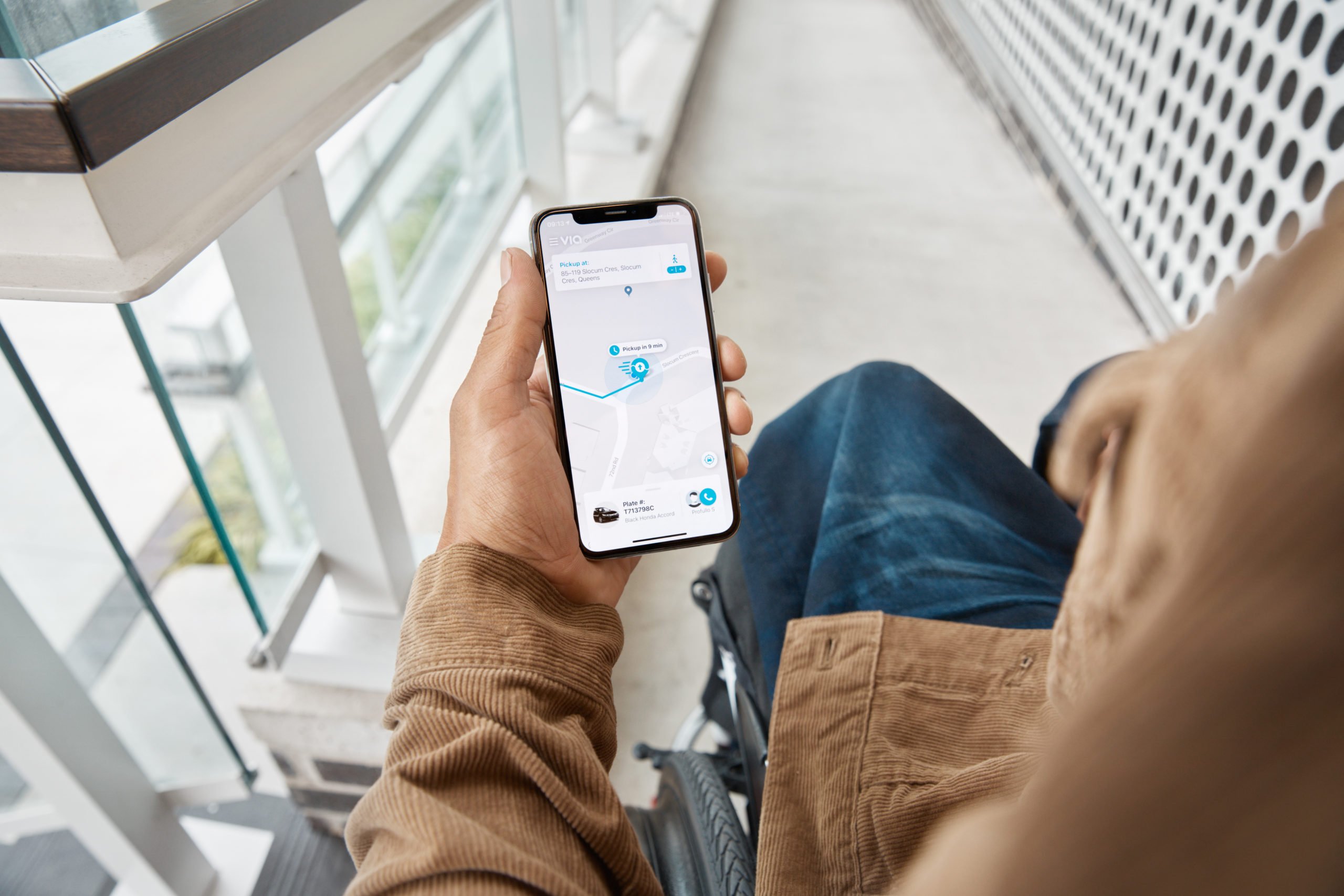
Modernizing paratransit operations should start with procurement.
New technology and innovative service models are critical ingredients for a modern paratransit operation. There are three things that cities can do during the procurement processes to bring their services into the 21st century:
- Begin the procurement process by issuing a Request for Information (RFI) and/or market sounding questionnaire which will solicit state-of-the-art technologies and delivery models. This will empower the city to open the Scope of Work to innovation and competition.
- RFPs should give proposers the option to provide operations and technology. This will allow cities to directly benefit from efficiency gains, given the operator can price cost-savings related to technology improvements in its bid.
- Consider including performance-based incentives in service contracts, which would encourage vendors to meet targets that improve both the customer experience and system efficiency.
Looking for help, but not sure where to start? We can help. Email us at partnerships@ridewithvia.com.
